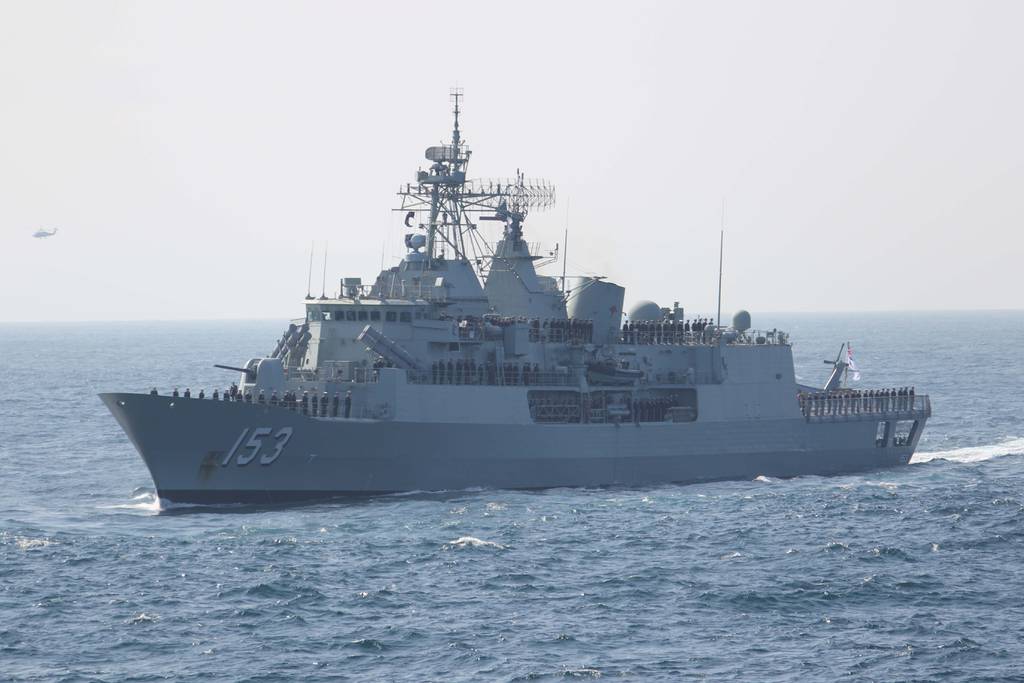
CHRISTCHURCH, New Zealand — Australia has approached several foreign shipbuilders in an urgent quest to procure general-purpose frigates under Project Sea 3000, the Defence Department told Defense News.
The government sent requests for information to German, Japanese, South Korean and Spanish shipbuilders on May 24, the department said. However, a spokesperson for the department declined to provide further details “while the evaluation is underway, due to [the] commercial, procurement and probity process.”
A government review unveiled in February, titled “Enhanced Lethality Surface Combatant Fleet,” recommended 11 general-purpose frigates replace eight existing Anzac-class frigates. To speed up the process, the first three would undergo construction overseas and the remainder in Western Australia.
The review pinpointed Germany’s MEKO A-200, Japan’s version 30FFM, South Korea’s FFX from the second and third batches, and Spain’s Alfa 3000 as contenders. It cites the two FFX batches as a single platform type, though it’s unclear why.
The shipbuilders were reportedly given four weeks to respond to the initial request, plus another three weeks to explain how follow-on frigates can be built in Australia.
Selection is expected to occur next year, with commissioning of the first overseas-built ship to take place in 2030. The fourth through sixth vessels, build in Australia, are to have an identical baseline. No decision has been made on the design of the seventh through eleventh frigates.
The Royal Australian Navy’s surface combatant fleet will feature a total of nine hulls in 2026, underscoring the looming capability gap before new frigates start arriving.
Shipbuilders approached by Defense News declined to go into detail regarding Australia’s procurement effort. For example, German company ThyssenKrupp Marine Systems confirmed it “participated in the tender” but added that “we’ll not comment on further details of the ongoing process.”
Ongoing construction of six Ulsan-class FFX-III vessels for the South Korean Navy is split between Hyundai Heavy Industries, SK Oceanplant and Hanwha Ocean. The construction of eight Daegu-class FFX-II ships concluded last year. A Hyundai Heavy Industries spokesperson confirmed it received the request for information.
“HD Hyundai Heavy Industries has great competitiveness with its rich experience in warship building, such as [research and development] and first ship of the latest Ulsan-class frigate,” the spokesperson said. “This will be an opportunity for HHI to show how they approach warship orders that fit the situation of each country.”
In reference to frigate designs, Rear Adm. Stephen Hughes, Australia’s head of naval capabilities, told the Combined Naval Event conference in the U.K. on May 23 that the country is using existing designs in order to quicken the introduction of the vessels into the fleet.
However, Australian frigates identical to the aforementioned parent ships — the exemplars have been built for Egypt, Japan, Saudi Arabia and South Korea — raises potential difficulties because some of their weapons, sensors and systems were chosen by the original customers and could be unfamiliar to the Royal Australian Navy. Notably, Saab’s 9LB combat management system, which the Australian service uses across its fleet, isn’t incorporated into those ships. Likewise, the Australian-made CEA Technologies radars are also excluded.
“Whatever we choose, whatever standard we go with, we’re going to adopt that. We’re going to have discipline around that capability,” Hughes said, describing the acquisition process as “an opportunity, not a risk.”
“The risk is we don’t choose wisely and we don’t understand the designs.”
Gordon Arthur is an Asia correspondent for Defense News. After a 20-year stint working in Hong Kong, he now resides in New Zealand. He has attended military exercises and defense exhibitions in about 20 countries around the Asia-Pacific region.
- SEO Powered Content & PR Distribution. Get Amplified Today.
- PlatoData.Network Vertical Generative Ai. Empower Yourself. Access Here.
- PlatoAiStream. Web3 Intelligence. Knowledge Amplified. Access Here.
- PlatoESG. Carbon, CleanTech, Energy, Environment, Solar, Waste Management. Access Here.
- PlatoHealth. Biotech and Clinical Trials Intelligence. Access Here.
- Source: https://www.defensenews.com/naval/2024/06/07/australia-fast-tracks-its-hunt-for-replacement-frigates/



